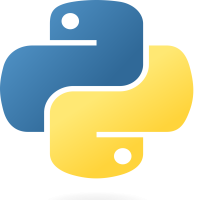
Python - Array
09-Jan-2024Explore the concept of arrays in Python. Learn how to create and manipulate arrays using built-in modules like array and NumPy, enhancing your ability to work with structured data efficiently.
Introduction
In Python, arrays play a pivotal role in storing and managing data effectively. The `array` module presents a memory-conscious alternative to traditional lists. This guide navigates through the fundamentals of utilizing arrays in Python.
1. Harnessing the 'array' Module
Commence your array journey by importing the 'array' module.
from array import array
2. Crafting Arrays
2.1. Inceptive Array Crafting
Shape arrays by specifying data types and initializing elements.
# Creating integer and float arrays
from array import array
integer_array = array('i', [3, 7, 11, 15, 19]) float_array = array('f', [0.5, 1.0, 1.5, 2.0, 2.5])
print("Integers:", integer_array) print("Floats:", float_array)
2.2. Diverse Data Types
Explore array versatility with different data types like characters.
# Creating a character array
from array import array
char_array = array('u', 'python')
print("Characters:", char_array)
3. Navigating Arrays
3.1. Element Expedition
Voyage through array elements or embark on a slice-seeking journey.
# Accessing elements and slicing
first_element = integer_array[0] array_slice = integer_array[1:4]
print("First Element:", first_element) print("Array Slice:", array_slice)
3.2. Element Transformation
Witness the transformation as elements undergo modification.
# Modifying elements
integer_array[2] = 99
print("Modified Integers:", integer_array)
3.3. Array Alchemy
Engage in array operations such as concatenation and repetition.
# Concatenation and repetition
concatenated_array = integer_array + float_array
repeated_array = integer_array * 2
print("Concatenation:", concatenated_array) print("Repetition:", repeated_array)
4. Memory Efficiency at its Core
Arrays in the 'array' module optimize memory usage, providing a contiguous storage solution.
Closure
Dive into Python arrays, unleashing their power in memory efficiency and streamlined data management. Whether dealing with numbers or characters, arrays stand as versatile tools, ready to elevate your Python programming endeavors.


